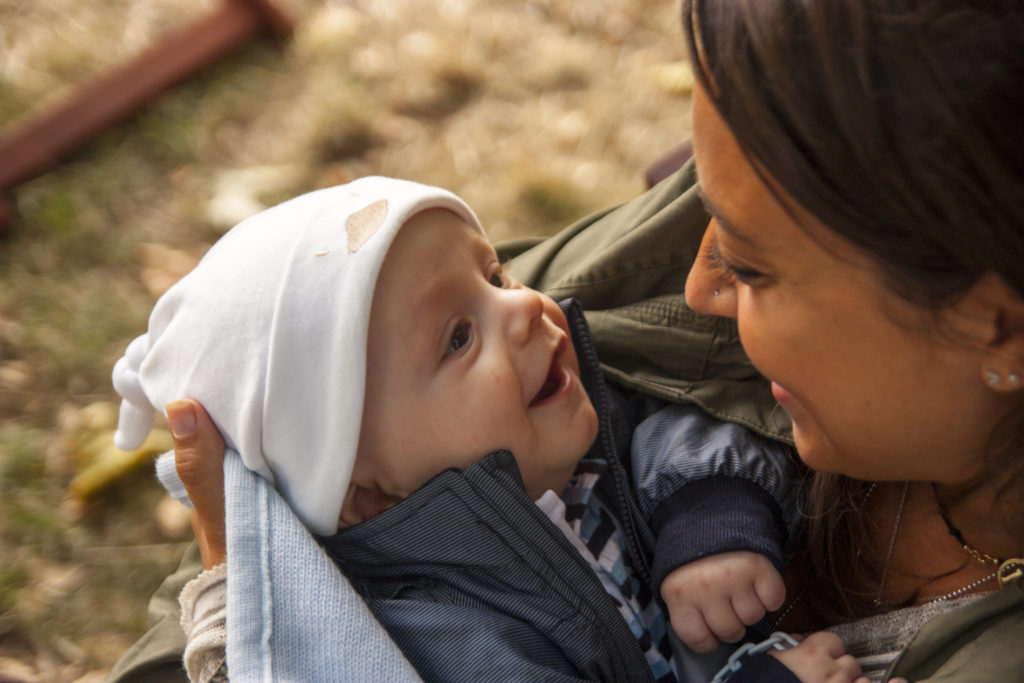I am pleased to be invited to comment on papers in this issue on the PiklerLoczy Institute, but I feel I must begin this commentary with a disclaimer. Like many readers of The Signal, I have only heard and read about the Pikler Institute and method. I have never the visited the Pikler Institute, nor have I even heard a presentation about it, though I did have an opportunity to meet with Anna Tardos and her colleagues in Leipzig and see a couple of video excerpts of infants from the Institute. Because of my limited knowledge about the place and its approach, it is likely that some of my comments will include inaccuracies and misunderstandings about both the institution and its approach. I accept full responsibility for these in advance.
I have two sets of reactions to my reading of the articles in this issue. First, my thoughts about the Pikler-Loczy method, which is highlighted as an approach about how adults can and perhaps ought to “be with” infants. This is obviously an approach that is not restricted to institutional settings but can be employed by any caregiving adults interacting with infants. Second, I will comment on the fact that this particular method continues to be practiced in an institutional setting.
As we learn from Tardos (this issue), the Piklerian view of an infant is active and competent, living “in peace with himself and his environment.” Tardos suggests that interest in Piklerian educational and developmental concepts may be due to parents’ wishes to raise a generation of children who are more peaceful, cheerful and active individuals. Central to the approach as I understand it, is allowing each infant to move freely and unconstrained, with no imposition of parental agendas, such as holding a 4-month-old in a standing position. In addition to being good for the baby, who achieves and feels proud about realizing the results of his own efforts, the approach I also believed to be good for his parent, because they learn to appreciate and respect the baby’s need for autonomy.
Konichekis (this issue) emphasizes allowing the infant to use his free and spontaneous activity to take “the initiative of his own movements, making use of his personal capacities and thus becoming less dependent on the people around him.” Golse (this issue) emphasizes the adult’s relinquishment of power and dominance over the infant.
Developmental research, inspired originally by White’s (1959) theory of effectance motivation, began to study a construct now known as mastery motivation. This refers to the inherent pleasure an infant derives from mastering the unfamiliar and is closely linked to curiosity. White believed that individuals are intrinsically motivated to explore and to master their environmental contexts. His position was congruent with Hunt’s (1965) view of infants as motivated, active constructors of their environments. This part of the Piklerian view seems familiar.
On the other hand, when Konichekis asserts that from a Piklerian perspective, “a baby can also exist alone,” it is clear that the approach diverges quite dramatically from a mainstream contemporary infant mental health perspective which has emphasized the infant in relational context. It is possible to argue that the Pikler approach has more to do with how one is with the baby, but it seems clear to me that the emphasis on infant autonomy is a clear difference.
Vamos (this issue) and Golse are most explicit about the interpersonal aspect of the Piklerian approach. Vamos notes that it is within instrumental caregiving activities rather than play that the child experiences “the adult’s investment,” creating the “basis for their relationship,” and “the foundation of the infant’s self-construction.” This is puzzling, to say the least, as adult investment in the baby seems likely to transcend the nature of the specific transactions (e.g., play, instrumental care, instruction). Parent child relationships, to be sure, may vary in the functional domains that are healthier or less healthy, but why the adult’s investment would be most apparent during instrumental caregiving is unclear.
Golse contrasts the Pikler-Loczy way of being with an infant with contemporary cultural pressures for parents’ expertise (doing things the “right” way), rapidity (pressures to hurry up) and results (an emphasis on quantifiable results). Instead of these values, Pikler-Loczy emphasizes allowing the infant to develop more spontaneously, at his/her own pace, and valuing experiential learning processes rather results. For so called “intrusive” parents, one can appreciate the value of this approach, much as Watch, Wait, and Wonder encourages emotional availability and reflection before action (Muir, 1992).
Interestingly, because of the large number of orphaned children after the Second World war, Dr. Emmi Pikler started a “nursery home” in Budapest, and there she applied her approach to the children being raised there. The Loczy has operated continuously for the past 64 years. The many testaments in this issue to the quality of care provided there indicate that there is an extensive effort to recruit and train the staff in the Piklerian approach.
Given the well documented corrosive effects on infant development that have been demonstrated in studies of institutionally reared children (Nelson et al., 2009; Rutter et al., 2010), this raises interesting questions. What is the nature of attachments between the infants in Loczy and their caregivers? Given the deemphasis or perhaps interchangeability of caregivers in this approach, what are the outcomes for the young children raised there? How are they similar to or different from children raised in other settings?
Although institutions are likely to remain caregiving settings for orphaned and abandoned children for the foreseeable future, there is a strong consensus in the child development and child protection literatures that young children are best raised within families. We know from the work of McCall and colleagues (2009) that caregiving quality within institutions can be enhanced, but every study ever conducted comparing foster care and institutional care has found that children in foster care look better on virtually every measure employed. This raises the question of why, other than historical reasons, the Piklerian approach is tied so closely to the Pikler-Loczy institution. The work of Vamos illustrates that the approach may be applied to children living with their parents. Presumably, foster parents also could be trained in this method, and its value in that context could be evaluated.
In summary, this is fascinating approach that deserves formal evaluation. I strongly encourage those committed to it to consider the value that would have for those who wonder about its role in contemporary infant mental health.
References
Cohen, N.J., Muir, E., Lojkasek, M., Muir, R., Parker, C.J., Barwick, M. & Brown, M. (1999). Watch, wait, and wonder: Testing the effectiveness of a new approach to mother–infant psychotherapy. Infant Mental Health Journal, 20, 429–451.
Hunt, J . M. (1965), Intrinsic motivation and its role in psychological development. In: Nebraska Symposium on Motivation, Vol. 13, Ed. D. Levine. Lincoln, Nebraska: University of Nebraska Press.
Muir, E. (1992). Watching, waiting and wondering: Applying psychoanalytic principals to mother-infant intervention. Infant Mental Health Journal, 13, 319-328.
Nelson, C.A., Furtado, E., Fox, N.A. & Zeanah, C.H. (2009). The deprived human brain. American Scientist, 97, 222-229.
Rutter, M., Sonuga-Barke, E., Beckett, C., Castle, J., Kreppner, J., Kumsta, R., Schlotz, W., Stevens, S.E. and Bell, C.A. (2010). Deprivation-specific psychological patterns: effects of institutional deprivation. Monographs of the Society for Research in Child Development, 75, 1-252.
The St. Petersburg-USA Orphanage Research Team. (2008). The effects of early social-emotional and relationship experience on the development of young orphanage children. Monographs of the Society for Research in Child Development, 73, 1-262.
White, R. W. (1959), Motivation reconsidered: the concept of competence. Psychological Review, 66:297-333
The Pikler Insitute and the Pikler-Loczy Method
Authors
Zeanah, Charles H.,
M.D.,
Institute for Infant and Early Child,
Tulane University School of Medicine,
New Orleans, Louisiana, USA








